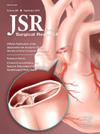改善烧伤护理和结果:发展中国家的观点
IF 1.8
3区 医学
Q2 SURGERY
引用次数: 0
摘要
发展中国家的烧伤护理面临着重大挑战,包括严重烧伤的高发病率和有限的治疗基础设施。方法:本研究是对2001年至2022年间有关烧伤的出版物的机构回顾,重点关注可能有助于改善患者预后的组织变革。研究期间分为2001-2013年和2013-2022年两个时间段,后者对应的是大多数机构改革的实施。对这两个时期的出版物进行了审查,以评估结果的变化。主要结局指标包括总死亡率、吸入性损伤发生率、与吸入性损伤相关的死亡率和儿科死亡率。没有报道这些结果的出版物被排除在外。在研究期间,烧伤病房内的重大组织变化也被记录下来。结果儿科患者占研究人群的45%。在2001-2013年和2013-2022年期间,分别有37%和32%的患者出现吸入性损伤。2001-2013年和2013-2022年吸入性损伤患者死亡率分别为71%和38%。儿童死亡率从2001年至2013年的39.5%(289名患者中有114人死亡)显著下降到2013年至2022年的10.2%(265名患者中有27人死亡)。早期的致命区域50为45%,在2013年至2022年期间增加到75.6%。总死亡率从2001-2013年的42%下降到随后十年的19%。与这些改进相关的组织策略包括建立专门的烧伤科,培训专门的烧伤科护士,指派专门的烧伤科外科医生,由顾问领导的每日查房,组建多学科烧伤科小组,实施标准化护理方案,例行烧伤科审计和以患者为中心的病例审查。结论:我们的研究结果显示了烧伤预后的渐进式改善,并表明了进一步发展的潜力。本文章由计算机程序翻译,如有差异,请以英文原文为准。
Improvement in Burn Care and Outcomes: A Developing World Perspective
Introduction
Burn care in developing countries faces significant challenges, including a high incidence of major burns and limited treatment infrastructure.
Methods
This study is an institutional review of publications on burn injuries between 2001 and 2022, with a focus on organizational changes that may have contributed to improved patient outcomes. The study period was divided into two intervals: 2001-2013 and 2013-2022, with the latter corresponding to the implementation of most institutional reforms. Publications from both periods were reviewed to assess changes in outcomes. The primary outcome measures included overall mortality rate, incidence of inhalation injury, mortality related to inhalation injury and pediatric mortality rate. Publications that did not report any of these outcomes were excluded. Significant organizational changes within the burn unit during the study periods were also documented.
Results
Pediatric patients accounted for 45% of the study population. Inhalation injury was observed in 37% and 32% of patients admitted between 2001-2013 and 2013-2022, respectively. The mortality rates among patients with inhalation injuries were 71% and 38% during the periods 2001-2013 and 2013-2022, respectively.
The pediatric mortality rate declined significantly from 39.5% (114 deaths out of 289 patients) between 2001 and 2013 to 10.2% (27 out of 265 patients) between 2013 and 2022. The Lethal Area 50 in the earlier period was 45%, increasing to 75.6% between 2013 and 2022. The overall mortality rate declined from 42% during 2001-2013 to 19% over the subsequent decade. Organizational strategies associated with these improvements included the establishment of a dedicated burn unit, training of specialized burn nurses, assigning of dedicated burn surgeon, consultant-led daily ward rounds, formation of a multidisciplinary burn team, implementation of standardized care protocols, routine burn audits and patient-centered case reviews.
Conclusions
Our findings demonstrate a progressive improvement in burn injury outcomes and suggest potential for further advancement.
求助全文
通过发布文献求助,成功后即可免费获取论文全文。
去求助
来源期刊
CiteScore
3.90
自引率
4.50%
发文量
627
审稿时长
138 days
期刊介绍:
The Journal of Surgical Research: Clinical and Laboratory Investigation publishes original articles concerned with clinical and laboratory investigations relevant to surgical practice and teaching. The journal emphasizes reports of clinical investigations or fundamental research bearing directly on surgical management that will be of general interest to a broad range of surgeons and surgical researchers. The articles presented need not have been the products of surgeons or of surgical laboratories.
The Journal of Surgical Research also features review articles and special articles relating to educational, research, or social issues of interest to the academic surgical community.

 求助内容:
求助内容: 应助结果提醒方式:
应助结果提醒方式:


